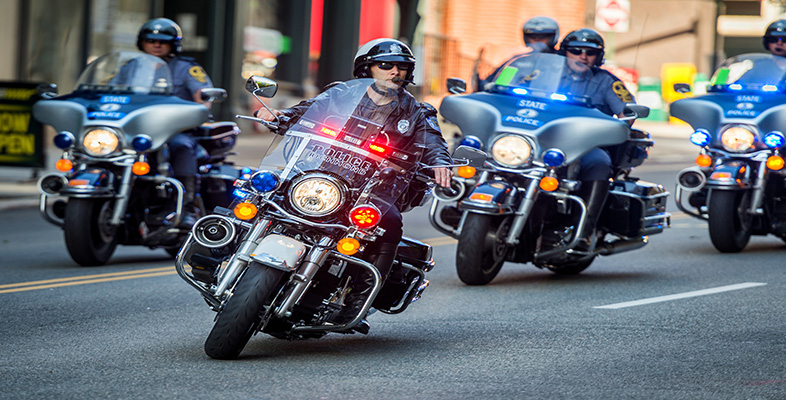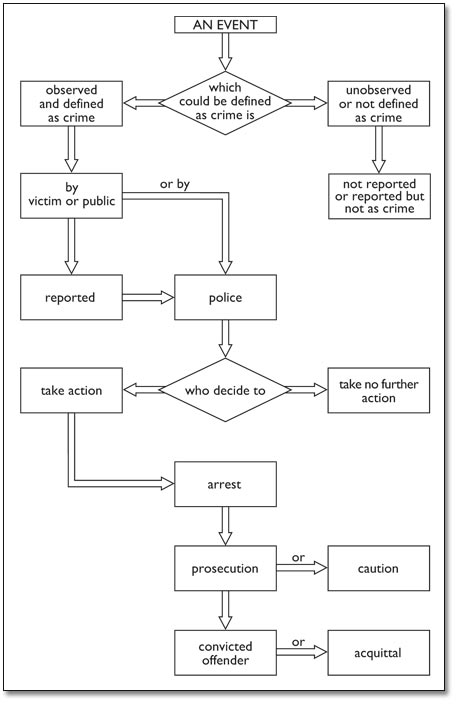1.2 The recognition and pursuit of crime
Whatever crime might mean, it can still land you in trouble. So given our answers to the questionnaire, why aren't we doing time at Her Majesty's Pleasure, or paying off an enormous backlog of fines? Not only the meaning of crime, but also the transformation of a potentially criminal act into conviction and imprisonment, is an irreducibly social process.
Activity 2
Figure 1 is a flow diagram of actions that take place between a potentially criminal act occurring and that act resulting in a conviction and imprisonment. It has been broken down into a series of sequential steps.
Follow the diagram once to get a sense of it. Then imagine the chain of events that might occur through the diagram if you replace the abstract event in the first box with a concrete example.
Note down any reasons you can think of that might explain the act not resulting in conviction and imprisonment.
Try one of the following:
-
Two youths stealing a car stereo.
-
An illegal discharge of chemicals from an oil refinery into a river.
Discussion
In the case of the two youths and the car stereo, we assumed it probably wouldn't be witnessed but thought it probably would be reported for insurance purposes.
If it was witnessed, there is a reasonable chance that it would be reported to the police but unless the witness could give a very clear description of the youths the police would just file the incident.
In the unlikely event that the police were to follow up the case and make an arrest, the decision to proceed with a court case might well depend on who they arrested. How might police action differ in the cases of two students, and two schoolkids? Both probably would be prosecuted, but there might be considerable differences in sentencing if magistrates perceived one case as student high jinks and the other as reprehensible juvenile delinquency.
In the case of the chemical discharge, we assumed that most of the time it goes unobserved. Even if most of us had seen such a discharge, would we know whether it was a crime, or just a normal part of the industrial process?
It is unlikely that any victims of the crime would report it, as chemical poisoning might take place many miles away, or many weeks afterwards. In any case, the Environment Agency, not the police, are the main institution responsible for policing pollution. The police do not spend a great deal of time patrolling or observing industrial installations.
Even if the Environment Agency did get to hear about the discharge by some route would they decide to investigate it? Do they have the resources available to do so? What else could they use those resources for? The enormous cost in time and money of fighting a large corporation in court might dissuade them from further action even if they got as far as beginning an investigation.
The path from act to conviction is shaped by, amongst other things, the knowledge of potential observers, their own definitions of crime, and police practice and resources. But this raises more questions. What shapes prevalent beliefs and attitudes to potentially criminal acts? What determines police practice? What determines police priorities? Whatever the answers to these questions we can be sure that part of the explanation will involve more than uncovering the individual preferences and interests of the actors involved. We would, for example, need to look at how a social institution like the police force or the Environment Agency operates; who makes decisions within it and under what circumstances? Just as the meaning of crime is socially constructed, the official recognition and pursuit of crimes is socially constructed.

